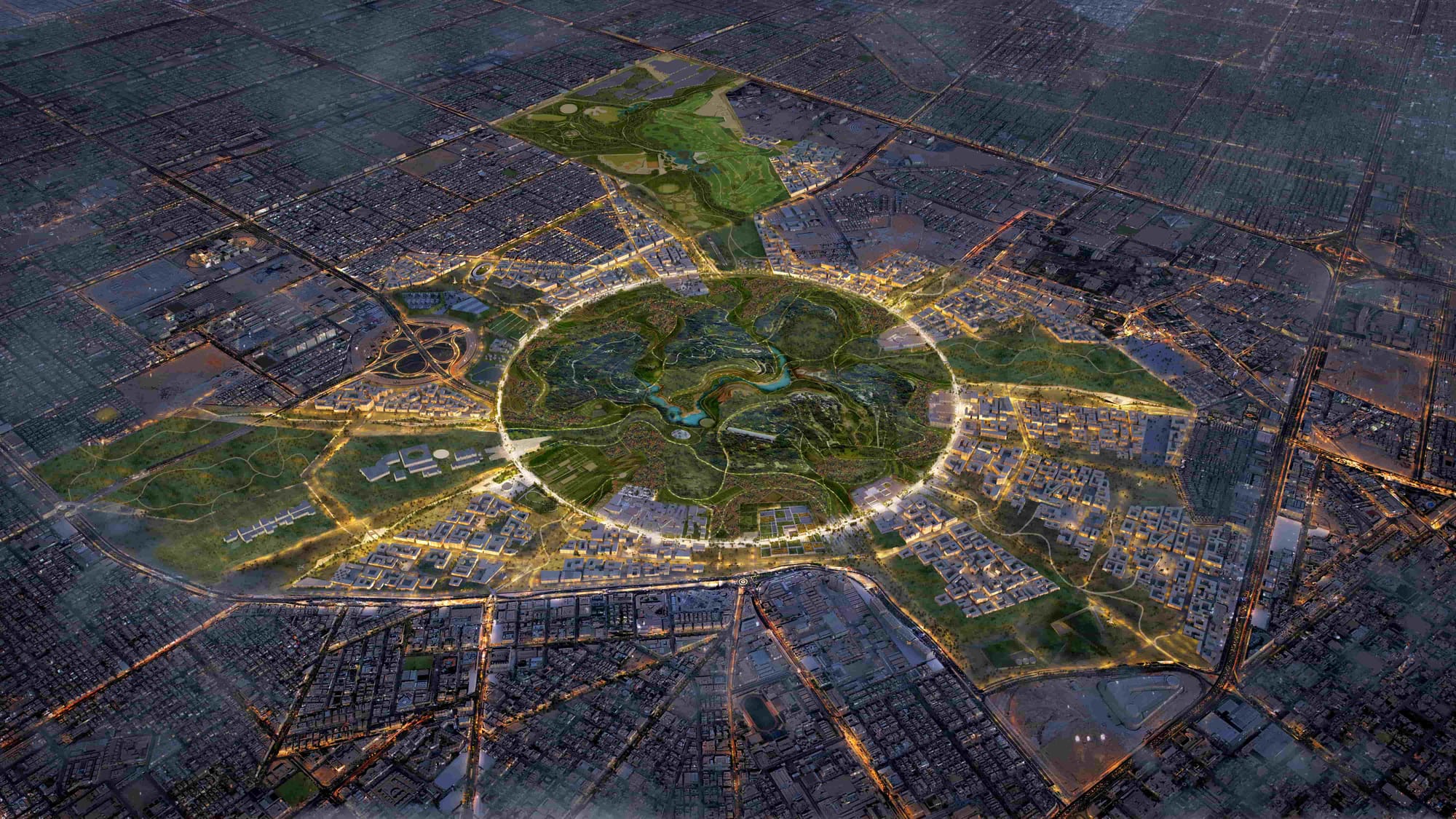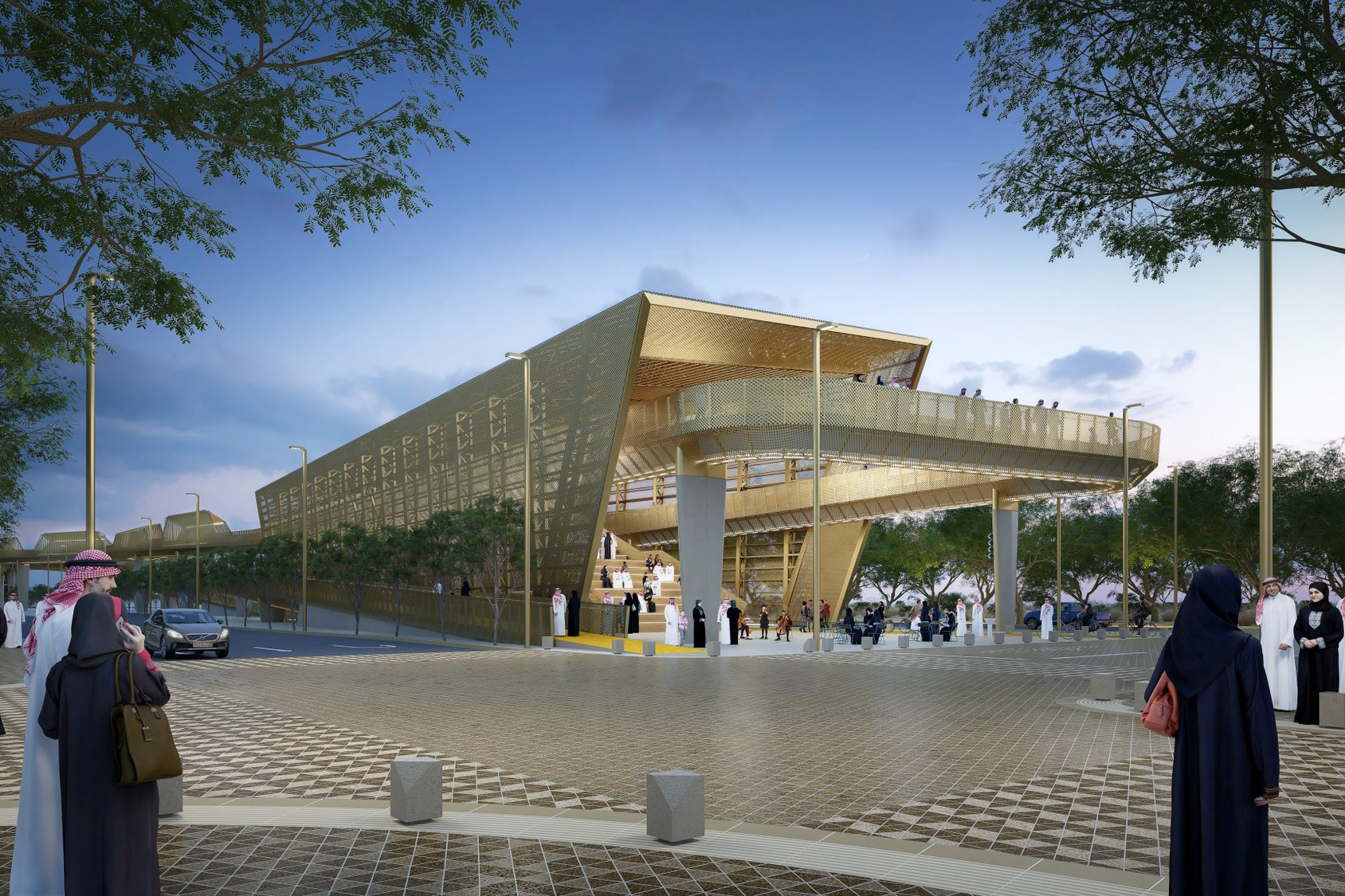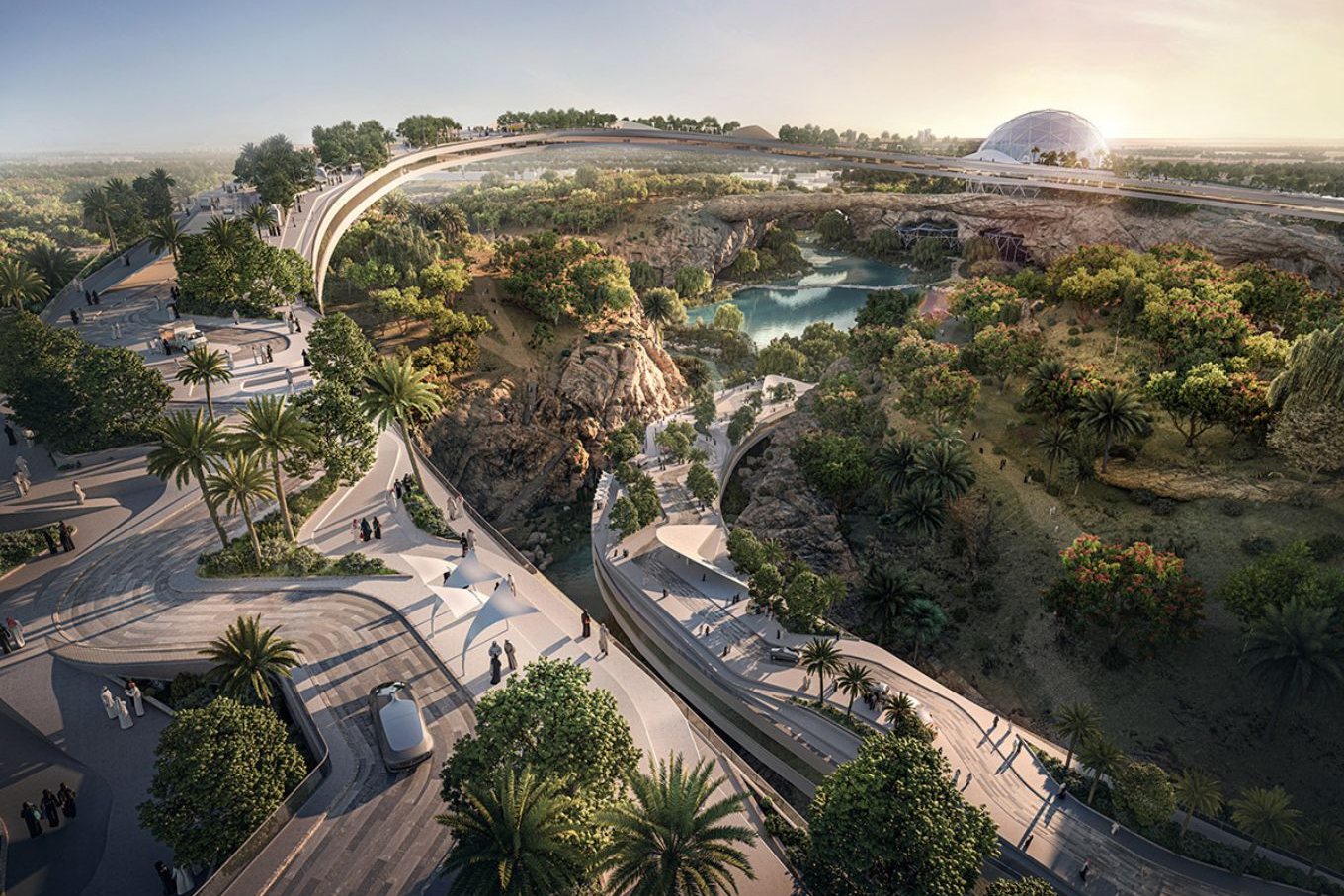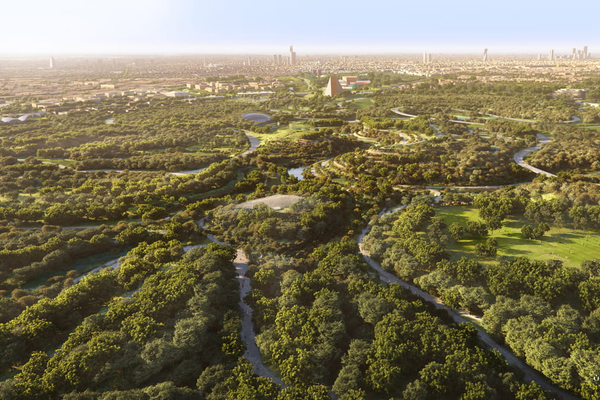Riyadh, the dynamic capital of Saudi Arabia, has long been defined by its vast desert terrain and arid climate. But today, it's at the heart of one of the world’s most ambitious urban greening efforts. The Green Riyadh Project is transforming the cityscape with millions of trees, sustainable parks, and vibrant boulevards—all designed to enhance quality of life and align with the bold goals of Saudi Vision 2030.
While some major parks and boulevards are still in development, early glimpses of the Green Riyadh Project can already be experienced in neighborhoods like Qurtuba and Al-Aziziyah. This guide explores both what's already accessible and what’s coming soon in this visionary initiative.
Behind the Vision: Why Riyadh Is Going Green
These parks and green corridors are just the beginning.
What may seem like isolated developments are actually part of a much larger, coordinated effort to transform Riyadh into one of the world’s most livable cities. The Green Riyadh Project is the driving force behind these changes—let’s take a look at what it is and what it aims to achieve.

What is the Green Riyadh Project?
Launched in 2019 by King Salman bin Abdulaziz and spearheaded by Crown Prince Mohammed bin Salman, the Green Riyadh Project is a cornerstone of Riyadh's four mega-projects, alongside King Salman Park, Sports Boulevard, and Riyadh Art. With a budget of approximately $23 billion, this initiative seeks to elevate Riyadh's global livability ranking by introducing extensive green spaces and sustainable urban planning.
A Vision 2030 Initiative
The Green Riyadh Project plays a vital role in achieving the environmental goals outlined in Saudi Vision 2030. By increasing vegetation cover, improving air quality, reducing energy consumption, and enhancing urban life, the project supports the Vision’s ambition to create a greener, more sustainable Saudi Arabia. It also contributes to broader goals such as improving the quality of life, promoting healthy living, and developing vibrant cities.
Key Objectives
- Massive Tree Planting: Planting over 7.5 million trees by 2030 to increase the city's green coverage from 1.5% to 9%.
- Enhanced Green Spaces: Boosting per capita green space from 1.7 square meters to 28 square meters, a 16-fold increase.
- Climate Mitigation: Reducing ambient temperatures by up to 2°C and lowering surface glare temperatures by 8 to 15°C in densely afforested areas.
- Air Quality Improvement: Decreasing carbon dioxide levels by 3-6% and increasing oxygen and humidity levels.
- Energy Efficiency: Cutting energy consumption by an estimated 650 GWh annually.
- Flood Control: Enhancing the city's capacity to absorb rainwater, thereby reducing flood risks.
Implementation Strategy
Urban Afforestation
The project encompasses the greening of various urban elements:
- 43 Grand Parks: Development of large-scale parks across the city.
- 3,331 Neighborhood Parks: Creation and enhancement of local parks to serve residential areas.
- 5,939 Schools & 4,500 Mosques: Afforestation of educational and religious institutions.
- 387 Health Facilities & 1,665 Government Complexes: Integration of green spaces into public service buildings.
- 1205 km of Main Roads & 4936 km of Internal Streets: Lining roads with trees to improve aesthetics and air quality.
Sustainable Irrigation
To support this massive greening effort, a 1,350 km treated water network is being established, capable of supplying 1.7 million cubic meters of water daily for irrigation purposes.
Biodiversity and Native Flora
The project emphasizes the use of 99 tree species native to the region, ensuring ecological compatibility and resilience.
Highlighted Projects
Neighborhood Initiatives
Afforestation efforts have commenced in seven neighborhoods: Al-Aziziyah, Al-Naseem, Al-Jazeera, Al-Araija, Qurtuba, Al-Ghadir, and Al-Nakhil. These areas are witnessing the transformation of streets, parks, and public spaces into green sanctuaries.
Community Engagement and Economic Opportunities
The Green Riyadh Project is not just an environmental initiative but also a catalyst for community involvement and economic growth:
- Private Sector Participation: Opportunities in plant nurseries, landscaping, and irrigation systems.
- Job Creation: Generation of employment in green industries and urban development.
- Educational Programs: Training centers and laboratories to foster expertise in sustainable practices.
What You Can Experience Today
Neighborhood Parks in Al-Aziziyah & Qurtuba
📍View the Area on Google Maps
🕒 Timings: Daily from Early Morning until 12:00 AM
As part of the Green Riyadh initiative, several neighborhood parks have been developed in areas like Al-Aziziyah and Qurtuba. These parks offer residents accessible green spaces for relaxation, exercise, and community gatherings, contributing to the overall goal of increasing per capita green space in the city.

Riyadh Sports Boulevard
📍View on Google Maps
🕒 Timings: Open 24 Hours
The Sports Boulevard is a transformative project aimed at promoting active lifestyles in Riyadh. Spanning 135 kilometers, it includes cycling paths, jogging tracks, and various sports facilities. The first phase, featuring the Cycling Bridge and Promenade sections, has been opened to the public, providing residents with new opportunities for outdoor activities.

To read more about the Sports Boulevard’s role in this transformation, check out Sports Boulevard in Riyadh: A Visionary Leap Toward Urban Wellbeing.
What’s Coming Soon: Future Green Highlights
Al-Urubah Park
📍View on Google Maps
🕒 Timings: 6AM to 5PM
Al-Urubah Park will be a significant addition to Riyadh's green spaces, covering approximately 75 hectares. Located at the intersection of Prince Turki bin Abdulaziz Road and Al-Urubah Road, the park is designed to enhance the city's sustainability and quality of life. It features panoramic walkways, themed gardens, recreational facilities, and interactive experiences, making it a central green hub for residents and visitors alike.

King Salman Park: The Crown Jewel of Riyadh's Green Vision
King Salman Park isn't just another green space—it's set to become the largest urban park in the world. Spanning over 16 square kilometers in the heart of Riyadh, the park will be a comprehensive destination for culture, leisure, and nature.
Key features include:
- A Royal Arts Complex and National Theater
- Museums, libraries, and exhibition halls
- Extensive sports areas and an 18-hole golf course
- An urban loop for walking and cycling
- A valley zone with lakes, gardens, and open-air art
King Salman Park exemplifies the integration of green living with cultural enrichment and recreational facilities.
For a deep dive into everything the park will offer, visit our detailed guide: Inside King Salman Park: The World’s Largest Urban Park

Other Mega-Parks
In addition to this mega-project, Riyadh is also planning:
- 43 Grand Parks
- 3,331 Neighborhood Parks
These developments are all part of the Green Riyadh transformation.
Visiting the Green Spaces
For residents and tourists alike, the burgeoning green spaces offer a plethora of activities:
- Recreational Activities: Jogging, cycling, and picnicking in newly developed parks.
- Cultural Events: Open-air theaters and amphitheaters hosting performances and festivals.
- Educational Tours: Interactive installations and guided tours highlighting sustainability efforts.
Visitor Tips for Exploring Green Riyadh
Best Times to Visit
- Early mornings or late afternoons are ideal, especially in warmer months.
- Weekdays tend to be quieter, while evenings and weekends may host family-friendly events.
What to Bring
- Comfortable shoes for walking or cycling.
- A reusable water bottle — many parks now have refill stations.
- Sunscreen and a hat for daytime visits.
- A picnic mat or light snacks for enjoying grassy spots.
Accessibility & Entry
- Most parks and boulevards under the Green Riyadh Project are free to enter.
- Parks like Al-Urubah are wheelchair-accessible and include amenities like public restrooms and shaded rest areas.
Travel Tip
- Don’t forget your camera or phone — the contrast between desert surroundings and green spaces makes for stunning photos, especially during golden hour.
Getting There
- If you're near a Riyadh Metro station (such as those along Line 1 or Line 3), check if it connects to stops near the Sports Boulevard or major parks. The metro is clean, efficient, and a great way to avoid traffic.
- For locations further from metro access — like Al-Aziziyah or some neighborhood parks — Careem and Uber are convenient and widely available.
- Most parks have designated drop-off zones and nearby parking if you're reaching via car.
Final Thoughts
The Green Riyadh Project stands as a testament to Saudi Arabia's forward-thinking approach to sustainability and urban development. While the transformation is still unfolding, visitors can already enjoy beautiful green spaces in neighborhoods like Qurtuba and along the Sports Boulevard. With more destinations set to open in the near future—especially King Salman Park—Riyadh is steadily becoming a model for greening arid cities around the world.
🔔 For more expert guides on Saudi Arabia’s evolving landscapes, follow RoamSaudi and stay inspired for your next local adventure.


